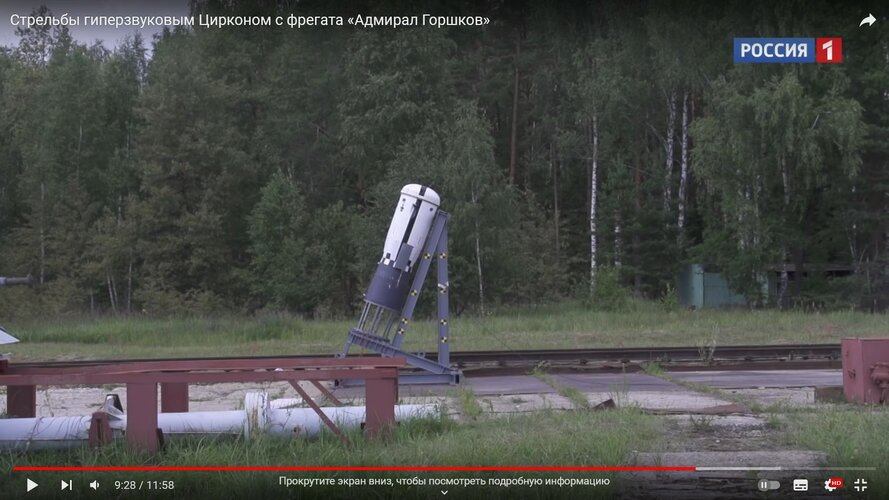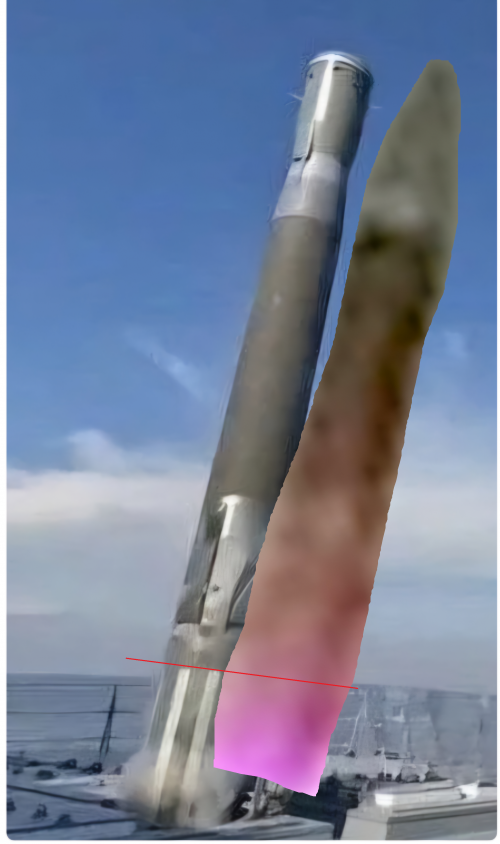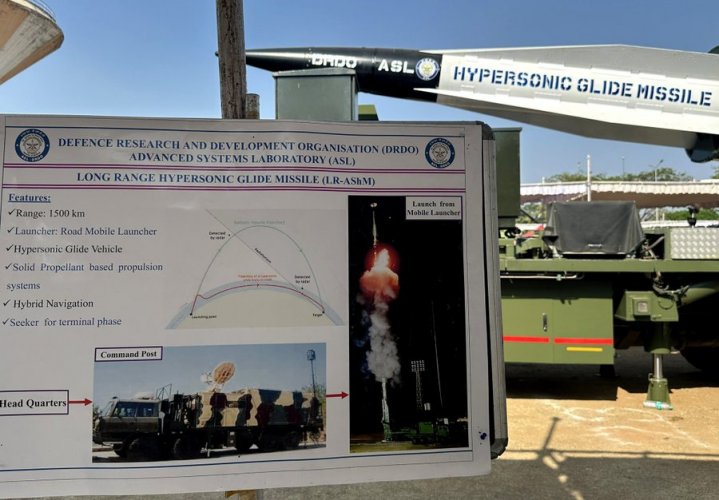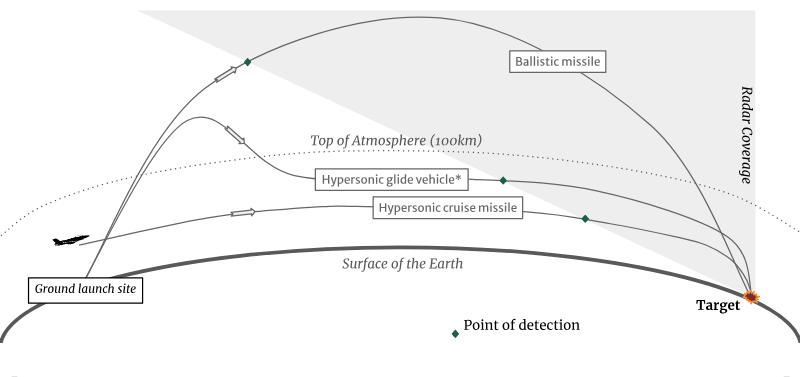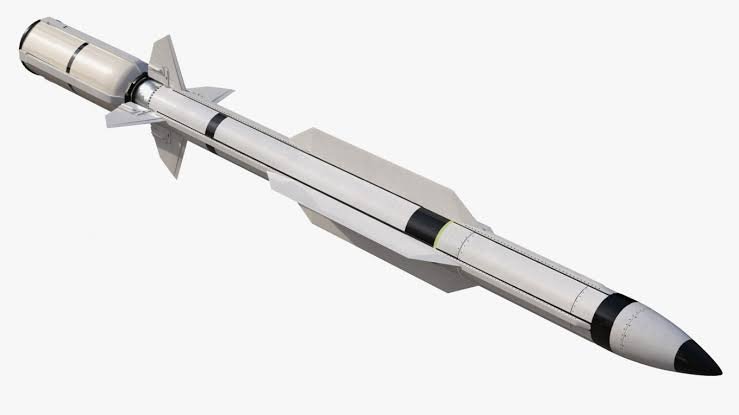PAC-3 MSE is a particularly maneuverable point defense system, though that is all it would be against something hypersonic. The fact is Ukraine does not a meaningful number of radars and launchers for that target type. More over even older types like Kh-22 have sufficient speed that to the best of my knowledge, they have never been intercepted.
You are using an out of date browser. It may not display this or other websites correctly.
You should upgrade or use an alternative browser.
You should upgrade or use an alternative browser.
NPOMash 3M22 Zircon Hypersonic Missile
- Thread starter bobbymike
- Start date
This "hood" orients the missiles in space and protects it from external influences at launch. Not only underwater, but also from the ship and from the ground
View: https://youtu.be/rpJdleN3Dv4?t=179
Attachments
Last edited:
TMA1
ACCESS: Top Secret
- Joined
- 6 February 2021
- Messages
- 556
- Reaction score
- 858
Been seeing your concept art and it looks pretty legit. So if true is this similar to our hyfly? Also I am adding this picture I saw someone posted on your forum that I think could add some weight to your speculations.

I could not find the origins of this image but I thought it would help in what you were trying to show with the four intakes.

I could not find the origins of this image but I thought it would help in what you were trying to show with the four intakes.
Last edited:
Forest Green
ACCESS: Above Top Secret
- Joined
- 11 June 2019
- Messages
- 9,458
- Reaction score
- 17,267
View: https://x.com/Archer83Able/status/1779566768933028191PAC-3 MSE is a particularly maneuverable point defense system, though that is all it would be against something hypersonic. The fact is Ukraine does not a meaningful number of radars and launchers for that target type. More over even older types like Kh-22 have sufficient speed that to the best of my knowledge, they have never been intercepted.
KurtDingus
ACCESS: Restricted
- Joined
- 29 November 2024
- Messages
- 2
- Reaction score
- 0
Are these 3D models available? Id like to try and print some.One of the possible versions
KurtDingus
ACCESS: Restricted
- Joined
- 29 November 2024
- Messages
- 2
- Reaction score
- 0
Thats all fine, I can clean it up. They look great. Ill take everything you can throw at me.this model is not for printing, it is full of inaccuracies and errors

QuadroFX
Russia, Chelyabinsk
Another one "Tsirkon" launch. This time in Mediterrian sea:
View: https://youtu.be/DiG3ZS50RSM

 ria.ru
ria.ru
View: https://youtu.be/eMBocYJX4vw
View: https://youtu.be/wqMY2PjmhGc
 vk.com
vk.com

ВМФ провел стрельбы гиперзвуковыми ракетами на учениях в Средиземном море
Российские корабли провели в Средиземном море учения, в ходе которых выполнили пуски гиперзвуковых ракет, сообщили в Минобороны. РИА Новости, 03.12.2024
VK.com | VK
Attachments
-
 1733234724831079_8rsSTsox.mp4_snapshot_00.34.884.png1 MB · Views: 44
1733234724831079_8rsSTsox.mp4_snapshot_00.34.884.png1 MB · Views: 44 -
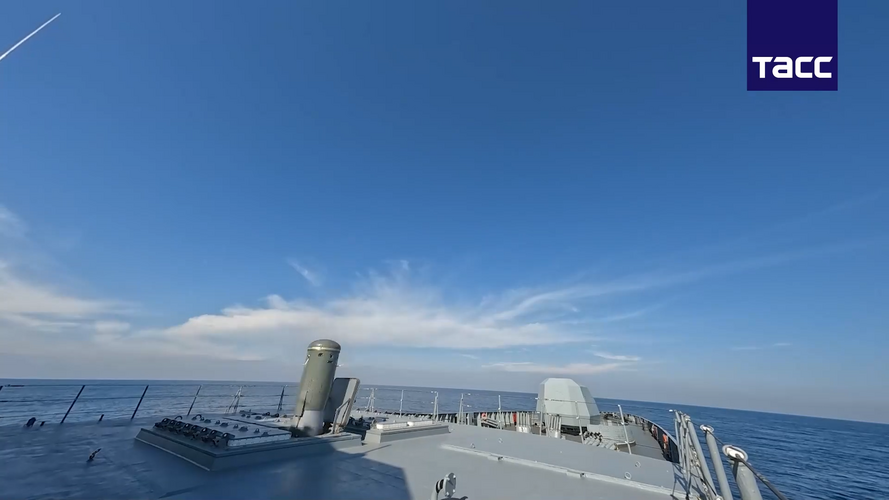 1733234724831079_8rsSTsox.mp4_snapshot_00.34.962.png1 MB · Views: 44
1733234724831079_8rsSTsox.mp4_snapshot_00.34.962.png1 MB · Views: 44 -
 1733234724831079_8rsSTsox.mp4_snapshot_00.35.044.png1 MB · Views: 47
1733234724831079_8rsSTsox.mp4_snapshot_00.35.044.png1 MB · Views: 47 -
 1733234724831079_8rsSTsox.mp4_snapshot_00.35.117.png1.1 MB · Views: 53
1733234724831079_8rsSTsox.mp4_snapshot_00.35.117.png1.1 MB · Views: 53 -
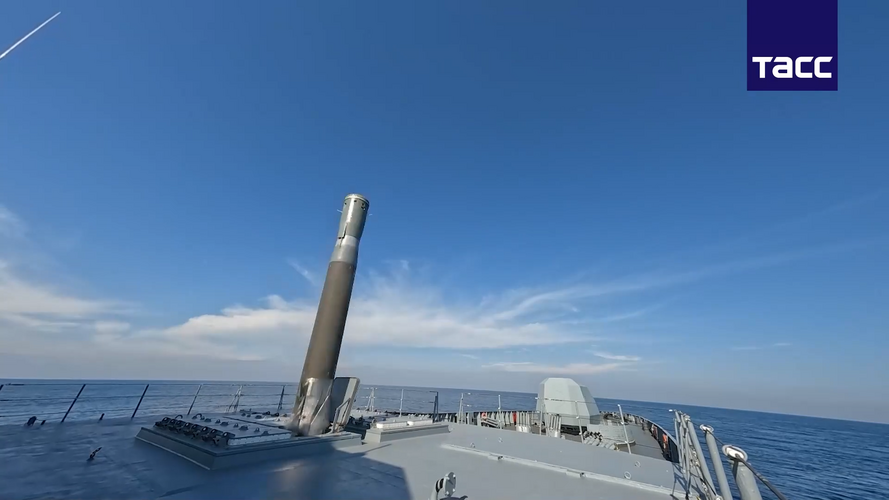 1733234724831079_8rsSTsox.mp4_snapshot_00.35.163.png1.1 MB · Views: 67
1733234724831079_8rsSTsox.mp4_snapshot_00.35.163.png1.1 MB · Views: 67 -
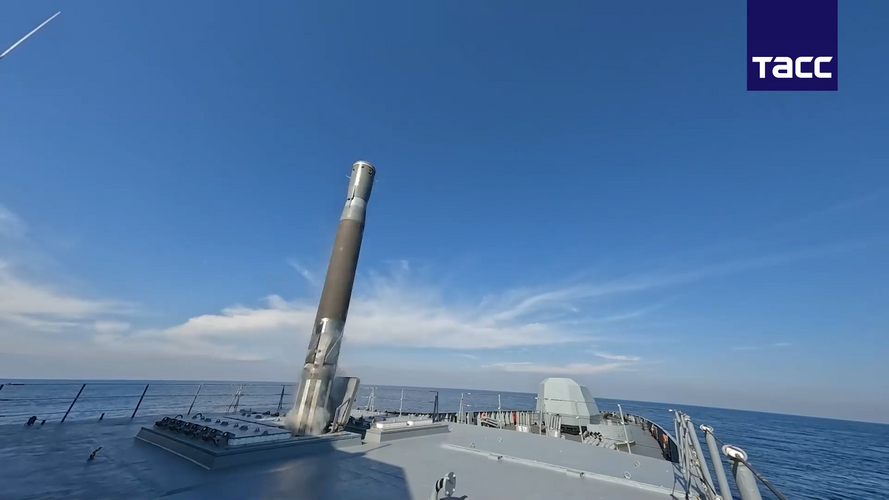 1733234724831079_8rsSTsox.mp4_snapshot_00.35.199.png1.1 MB · Views: 92
1733234724831079_8rsSTsox.mp4_snapshot_00.35.199.png1.1 MB · Views: 92
Last edited:

Our Best Look At Russia’s Shadowy Zircon Hypersonic Missile
The Russian Navy launched the Zircon cruise missile as part of a large-scale live-fire exercise in the Mediterranean. The Russian Navy launched the Zircon cruise missile as part of a large-scale live-fire exercise in the Mediterranean.
Are we sure about those mid body wings on the upper section? There is nothing resembling those in the launch video above. there are some folded fins at the bottom of the upper section. Those are maybe even fairly long fins, longer than the fins in the graphic above. but they still look like a single set of fins placed near the bottom quarter of the missile (upper stage) length.
TeourdBeourglaer
ACCESS: Restricted
- Joined
- 8 August 2022
- Messages
- 28
- Reaction score
- 27
That's what the Boeing X-51 HCM demonstrator looked like when it flew in ~2010 - 2013.
Since then when someone mentions "Scramjet" missile, the X-51 pops into everybody's mind.
Most people don't realize there are many different scramjet intake designs.
I'm pretty sure the Russians copied one of a joint US/AUS Scramjet designs for Tsirkon.
HACM, from what I've read and seen has a very fluid-like flowing conical inlet, like nothing we've seen on any other missile...
US HACM mock upThat's what the Boeing X-51 HCM demonstrator looked like when it flew in ~2010 - 2013.
Since then when someone mentions "Scramjet" missile, the X-51 pops into everybody's mind.
Most people don't realize there are many different scramjet intake designs.
I'm pretty sure the Russians copied one of a joint US/AUS Scramjet designs for Tsirkon.
HACM, from what I've read and seen has a very fluid-like flowing conical inlet, like nothing we've seen on any other missile...
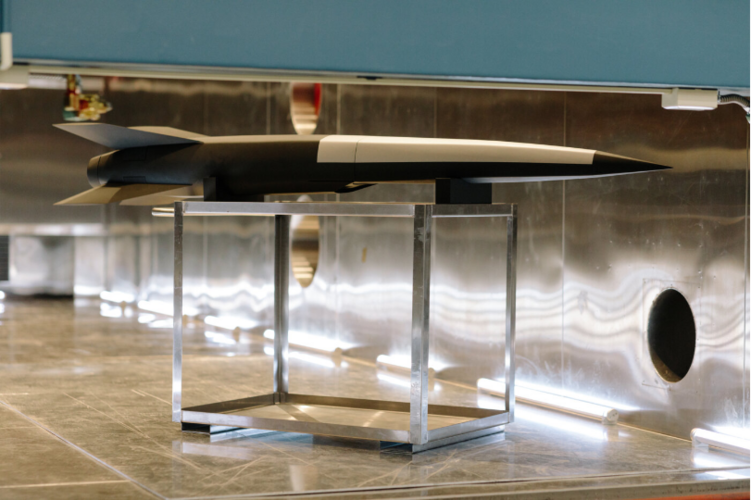

I believe the bottom photo is suspected to be NGs HALO submission. Certainly it has nothing to do with HACM, which is RTX.
mokahete
ACCESS: Restricted
- Joined
- 18 April 2025
- Messages
- 28
- Reaction score
- 12
Alright then.




 Imo, 99% sure zircon is purely rocket sustained.
Imo, 99% sure zircon is purely rocket sustained.
Doesn't mean, it's not a HCM though, well if you consider "cruise" part purely as flight characteristics/profile Rather than tying it up with "air-breathing( in this case sramjet)" propulsion that is.
Scram jet is a propulsion method that is synonymous with hcm.
But what if you can use purely rocket motors for maintaining same flight characteristics associated with sramjet powered HCMs, there's nothing stopping rocket propulsion from doing so.
With that Said while you can definitely achieve HCM flight characteristics and maneuverability with rocket motor, but it would be lot more inefficient compared to air breathing sramjet so to achieve desired range a somewhat bigger and lot heavier missile would be needed compared to using scramjet.
Though making a rocket sustained HCM will be lot more easier than developing scramjets.
With that Said definition of hcm is a missile that flies in depressed path at sustained 30-50km altitude, not following any predictable trajectory and lots of freedom of movement and good maneuverability during flight all that while flying at mach5+ in most of its flight path.
That's what makes it very hard to intercept and makes HCM scary, zircon even with rocket motors can achieve it.
So modification of HCM definition is needed, with not tying it up with propulsion.
Subcategories of HCM:-
1, HCM-RS( rocket sustained)
Pros:- easier and cheaper to builld and develop, proven, decade of experience and research, and designing a missile and Its internals around a rocket based propulsion is easier and tried and tested, while being just as deadly as HCM-AB.
Cons:- propulsion system is lot less efficient compared to air breathing
2, HCM-AB( Air breathing, scramjet in this case)
Pros:- lot more efficient.
Cons:- difficult and costly to develop.
So scramjet is not the only propulsion that can enable HCM flight characteristics, though its the most efficient way( for now) to enable those characteristics, though whether the extra cost and time it would take to develop scramjet to get that efficiency is worth it or not depends on case by case.
If we wish to develop a anti ship HCM with ~1000km range that is launched from land( size constraint are not much of a problem), then I would choose a bigger rocket sustained HCM due to it being easier to develop.
Vs
if we Wish to develop a HCM to launch multiple of those from a bomber aircaft then HCM-AB would be better and extra cost would be worth it.
So to choose between HCM-AB And HCM-RS it depends of what the desired range is and what size and weight constraints are there.
In terms of ability to penetrate enemy air defenses both will be equally deadly.
Using rocket propulsion also make it a lot easier and allows even countries like north korea of develop similar system for land attack role.
In 2022 NK tested a "hypersonic missile" which was previously assumed to be carrying a Marv warhead, but the description made by NK& tracking data provided by japan made the second stage sound more like a "boost-glide" vehicle than a traditional Marv similar to the "boost-glide" vehicle US is developing.

Them there's also HGV of NK

Recently tested anti ship hypersonic missile called LR-ASHM By India also seems to be a HCM-RS similar to Zircon, but with bigger control surfaces and larger size, as it's stated to have range upto 1500+km.
Though they call it "hypersonic glide missile" which is not completely wrong as it's flight characteristics seems like a hybrid between HCM and HGV, i thought of using boost glide for it, but it will be lot more maneuverable and seems to be maintain "constant altitude" like a hcm.

Then there is Shuarya missile, which can be called precursor or prototype of modern day HCM-RS missiles.


 acc. To this graph the max range in "hypersonic glide" of Shaurya is 700km, while zircon seems similar in size( ~10m length, 0.6-0.7m diameter) to this missile and is said to have ~1000km max range. This further supports my assumption of zircon being rocket powered as shaurya Is also purely rocket powered 2 stage missile.
acc. To this graph the max range in "hypersonic glide" of Shaurya is 700km, while zircon seems similar in size( ~10m length, 0.6-0.7m diameter) to this missile and is said to have ~1000km max range. This further supports my assumption of zircon being rocket powered as shaurya Is also purely rocket powered 2 stage missile.
Good read.
Surprisingly Indians seem to be the first ones to field hypersonic missiles that can cruise. More than a decade ago.
Though Russians still seems to be first one to make "anti ship" hypersonic missile that can cruise.
In terms of difficulty of interception all the systems mentioned here will be in same category of difficulty to intercept as HCM-AB( the bench mark for modern day hypersonic), though all being less efficient in terms of range.
HGV like chinese dfzf solves the range inefficiency problem, but they also need large booster to get to edge of space and generally less precise to control compared to powered missiles making them less ideal to use against moving targets, but chinese do seem to be developing an anti ship varient( currently only land attack varient exist, only hypersonic anti ship in chinese service for now is df21 ballistic missile) of that hgv with first tested reported to be done in 2023.


Then there's also russian avangard HGV.

 theaviationist.com
theaviationist.com
So modern hypersonics are being created and are either Close to enter service or already entered service.
But scramjet based ones are still little far away(US being most ahead in scramjet propulsion for now).


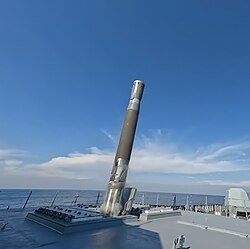
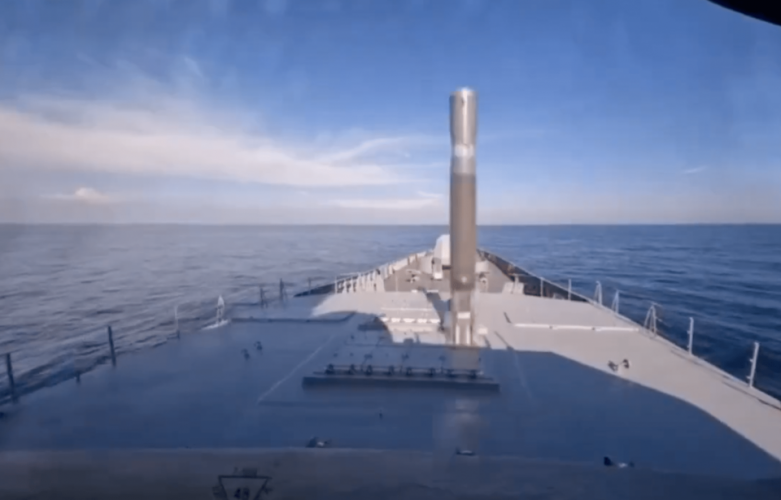
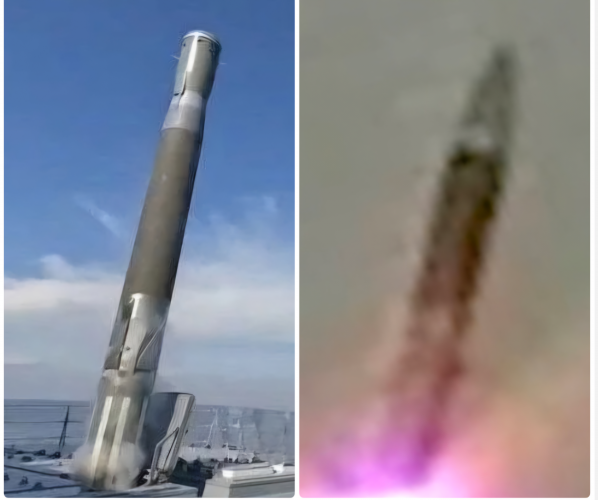 Imo, 99% sure zircon is purely rocket sustained.
Imo, 99% sure zircon is purely rocket sustained.Doesn't mean, it's not a HCM though, well if you consider "cruise" part purely as flight characteristics/profile Rather than tying it up with "air-breathing( in this case sramjet)" propulsion that is.
Scram jet is a propulsion method that is synonymous with hcm.
But what if you can use purely rocket motors for maintaining same flight characteristics associated with sramjet powered HCMs, there's nothing stopping rocket propulsion from doing so.
With that Said while you can definitely achieve HCM flight characteristics and maneuverability with rocket motor, but it would be lot more inefficient compared to air breathing sramjet so to achieve desired range a somewhat bigger and lot heavier missile would be needed compared to using scramjet.
Though making a rocket sustained HCM will be lot more easier than developing scramjets.
With that Said definition of hcm is a missile that flies in depressed path at sustained 30-50km altitude, not following any predictable trajectory and lots of freedom of movement and good maneuverability during flight all that while flying at mach5+ in most of its flight path.
That's what makes it very hard to intercept and makes HCM scary, zircon even with rocket motors can achieve it.
So modification of HCM definition is needed, with not tying it up with propulsion.
Subcategories of HCM:-
1, HCM-RS( rocket sustained)
Pros:- easier and cheaper to builld and develop, proven, decade of experience and research, and designing a missile and Its internals around a rocket based propulsion is easier and tried and tested, while being just as deadly as HCM-AB.
Cons:- propulsion system is lot less efficient compared to air breathing
2, HCM-AB( Air breathing, scramjet in this case)
Pros:- lot more efficient.
Cons:- difficult and costly to develop.
So scramjet is not the only propulsion that can enable HCM flight characteristics, though its the most efficient way( for now) to enable those characteristics, though whether the extra cost and time it would take to develop scramjet to get that efficiency is worth it or not depends on case by case.
If we wish to develop a anti ship HCM with ~1000km range that is launched from land( size constraint are not much of a problem), then I would choose a bigger rocket sustained HCM due to it being easier to develop.
Vs
if we Wish to develop a HCM to launch multiple of those from a bomber aircaft then HCM-AB would be better and extra cost would be worth it.
So to choose between HCM-AB And HCM-RS it depends of what the desired range is and what size and weight constraints are there.
In terms of ability to penetrate enemy air defenses both will be equally deadly.
Using rocket propulsion also make it a lot easier and allows even countries like north korea of develop similar system for land attack role.
In 2022 NK tested a "hypersonic missile" which was previously assumed to be carrying a Marv warhead, but the description made by NK& tracking data provided by japan made the second stage sound more like a "boost-glide" vehicle than a traditional Marv similar to the "boost-glide" vehicle US is developing.
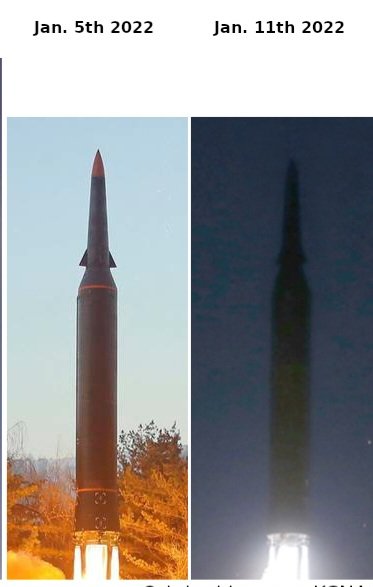
Them there's also HGV of NK
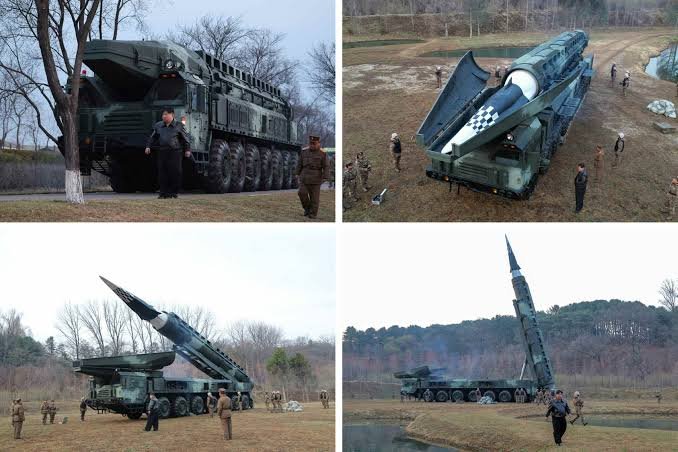
Recently tested anti ship hypersonic missile called LR-ASHM By India also seems to be a HCM-RS similar to Zircon, but with bigger control surfaces and larger size, as it's stated to have range upto 1500+km.
Though they call it "hypersonic glide missile" which is not completely wrong as it's flight characteristics seems like a hybrid between HCM and HGV, i thought of using boost glide for it, but it will be lot more maneuverable and seems to be maintain "constant altitude" like a hcm.
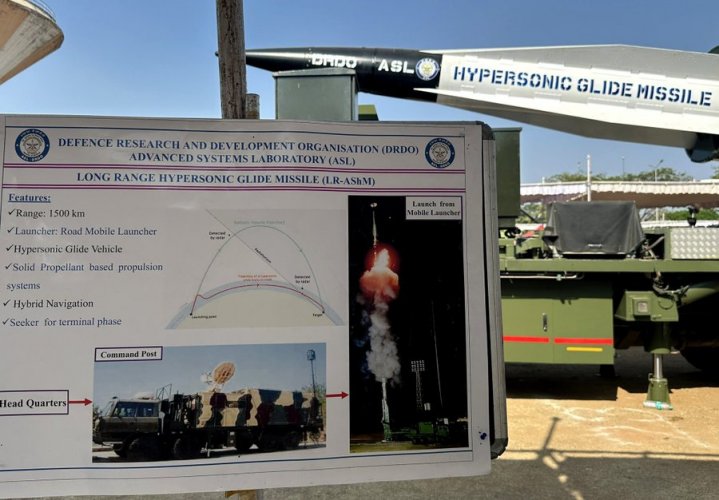
Then there is Shuarya missile, which can be called precursor or prototype of modern day HCM-RS missiles.
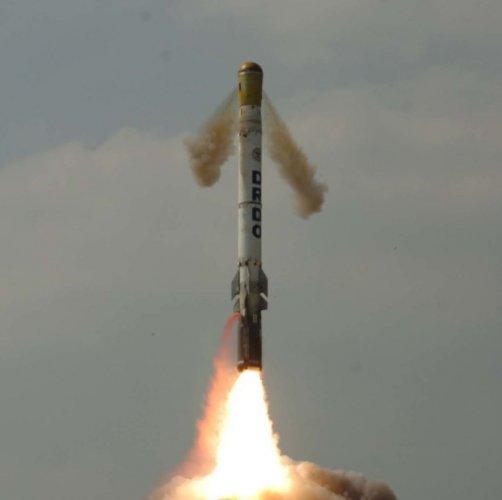
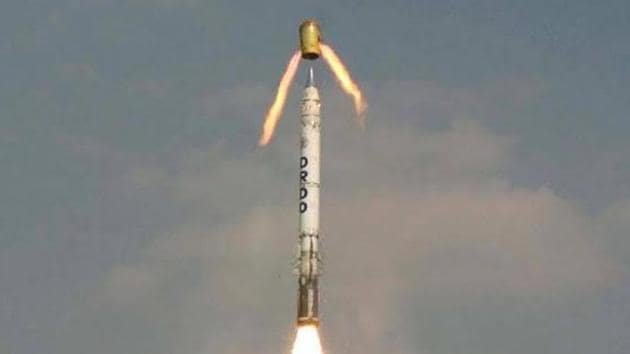
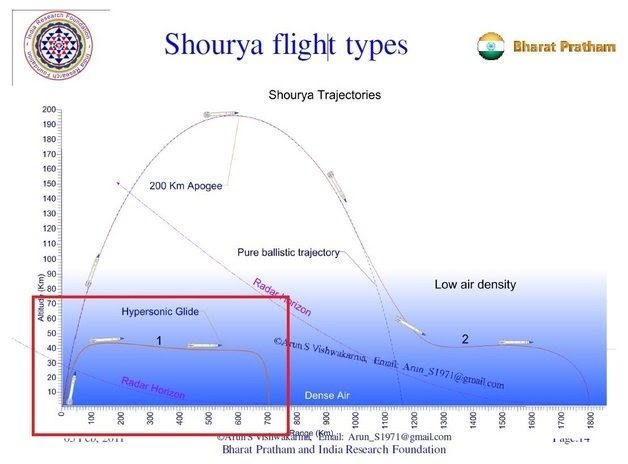 acc. To this graph the max range in "hypersonic glide" of Shaurya is 700km, while zircon seems similar in size( ~10m length, 0.6-0.7m diameter) to this missile and is said to have ~1000km max range. This further supports my assumption of zircon being rocket powered as shaurya Is also purely rocket powered 2 stage missile.
acc. To this graph the max range in "hypersonic glide" of Shaurya is 700km, while zircon seems similar in size( ~10m length, 0.6-0.7m diameter) to this missile and is said to have ~1000km max range. This further supports my assumption of zircon being rocket powered as shaurya Is also purely rocket powered 2 stage missile.Surprisingly Indians seem to be the first ones to field hypersonic missiles that can cruise. More than a decade ago.
Though Russians still seems to be first one to make "anti ship" hypersonic missile that can cruise.
In terms of difficulty of interception all the systems mentioned here will be in same category of difficulty to intercept as HCM-AB( the bench mark for modern day hypersonic), though all being less efficient in terms of range.
HGV like chinese dfzf solves the range inefficiency problem, but they also need large booster to get to edge of space and generally less precise to control compared to powered missiles making them less ideal to use against moving targets, but chinese do seem to be developing an anti ship varient( currently only land attack varient exist, only hypersonic anti ship in chinese service for now is df21 ballistic missile) of that hgv with first tested reported to be done in 2023.

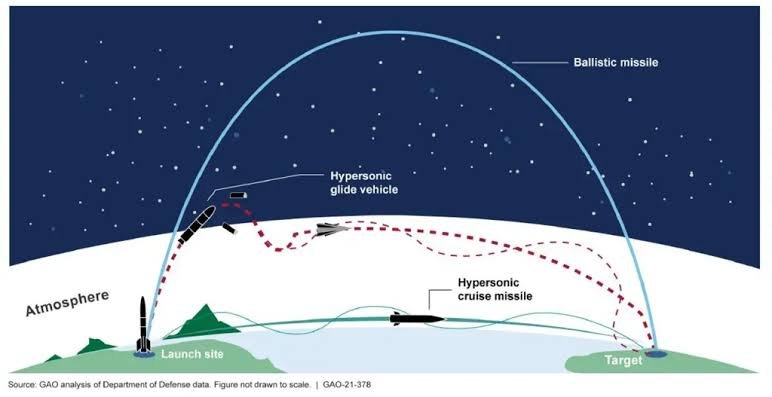
Then there's also russian avangard HGV.

Russia Deploys Long Range Hypersonic Missile System “Invulnerable to Intercept”.
Avangard Hypersonic Glide Vehicle Claimed to Fly at “Mach 27”, Carries MIRVs (Multiple independently targetable reentry vehicles). Russian state news
So modern hypersonics are being created and are either Close to enter service or already entered service.
But scramjet based ones are still little far away(US being most ahead in scramjet propulsion for now).
Last edited:
mokahete
ACCESS: Restricted
- Joined
- 18 April 2025
- Messages
- 28
- Reaction score
- 12
Dang, this speculation was ahead of its time.Is there any actual hard information on this? For all we know it could just be a rocket, something like a mini-Shaurya.
Any air breathing hypersonic would still have a solid rocket booster, and likely an integral one (an invention I believe the Soviets pioneered with “SA-6”). I think that’s all we are seeing; there is almost no possibility that Zircon is not air breathing.
What the media interchangeably calls "hypersonic" actually mix three different things
-boost-glide (rocket + glider)
-scramjet (rocket + plus a powered-airbreathing vehicle, all the way)
-ballistic missiles (dumb rocket, concept as old as the V-2)
Of the three, the one that can manoeuver the most to fool SAM and ABM defenses is obviously the airbreathing-powered one. Gliders quickly lose energy, V-2s are constrained by the unflexible rules of ballistics, very unforgiving PITAs.
Since Putin March 2018 wunderwaffen announcement, the Russians are developping "hypersonic" weapons belonging to all three above categories (Iskander and Kinzhal, Zirkon, and co.)
-boost-glide (rocket + glider)
-scramjet (rocket + plus a powered-airbreathing vehicle, all the way)
-ballistic missiles (dumb rocket, concept as old as the V-2)
Of the three, the one that can manoeuver the most to fool SAM and ABM defenses is obviously the airbreathing-powered one. Gliders quickly lose energy, V-2s are constrained by the unflexible rules of ballistics, very unforgiving PITAs.
Since Putin March 2018 wunderwaffen announcement, the Russians are developping "hypersonic" weapons belonging to all three above categories (Iskander and Kinzhal, Zirkon, and co.)
mokahete
ACCESS: Restricted
- Joined
- 18 April 2025
- Messages
- 28
- Reaction score
- 12
Why would a scramjet HCM have an integral booster just because soviets used integral booster in sa6 along with ramjet during cold war?Any air breathing hypersonic would still have a solid rocket booster, and likely an integral one (an invention I believe the Soviets pioneered with “SA-6”). I think that’s all we are seeing; there is almost no possibility that Zircon is not air breathing.
What benifit or ease of construction will it have over an booster that can be detached once scramjet starts?
Why benifit would integral booster have that the scramjet hcm will still that dead weight?
Not to mention in russian-India brahmos(p800) the booster separates are ramjet starts.
BRAHMOS Supersonic Cruise Missile - BrahMos.com
a universal supersonic cruise missile.different types of indian missile and russian missile.
www.brahmos.com
And why is there almost no possibility for zircon to be purely rocket powered two stage missile?
mokahete
ACCESS: Restricted
- Joined
- 18 April 2025
- Messages
- 28
- Reaction score
- 12
And why can't you achieve the same manoeuvrability as airbreathing with "sustained rocket motor" especially with efficiency modern fuel and rocket motors provide? it will be lot more inefficient compared to air breathing, but not so much that it's not achievevable, range would be relatively sacrifised, but a decent size missile would still have 100s of km of range with large ones having 1000+ km.What the media interchangeably calls "hypersonic" actually mix three different things
-boost-glide (rocket + glider)
-scramjet (rocket + plus a powered-airbreathing vehicle, all the way)
-ballistic missiles (dumb rocket, concept as old as the V-2)
Of the three, the one that can manoeuver the most to fool SAM and ABM defenses is obviously the airbreathing-powered one. Gliders quickly lose energy, V-2s are constrained by the unflexible rules of ballistics, very unforgiving PITAs.
Plus not having to care about flow of air into intake does give lot more freedom of movement.
And gliders Don't loose energy "quickly", especially not as quickly as you are describing.
There's a reason chinese df17's range is estimate to be 2000+km.
and instead of trying to tie it up so much with propulsion.
Categorize them by their flight characteristics/profile.
Then separately assign propulsions that can be used for those categories.
Last edited:
Dilandu
I'm dissatisfied, which means, I exist.
I see no proof of that besides "it's costly to develope" in all your post.Imo, 99% sure zircon is purely rocket sustained
Dilandu
I'm dissatisfied, which means, I exist.
mokahete
ACCESS: Restricted
- Joined
- 18 April 2025
- Messages
- 28
- Reaction score
- 12
My post was more about its possible to achieve the flight characteristics associated with scramjet HCM through sustained rocket motors too, so zircon "does not necessarly need to be "scramjet" powered", other methods of propulsion are possible too.I see no proof of that besides "it's costly to develope" in all your post.
As for proof, 100% certainty of whether it's a scramjet powered or rocket sustained can only be achieved when clear pictures of its nose without fairing appear, that's why i said 99% instead of 100%.
But I personally 99% believe it to be rocket sustained instead of air breathing.
Specially after comparing it to Shaurya missile and Its range in HCM/depressed glide trajectory mentioned in the graph.
Another aspect was to detach the definition of hcm from propulsion method, as cruise is ultimately a flight envelop/path.
Tho scramjet for now are the "most efficient with good controllablity" propulsion method to achieve cruise flight envelop at hypersonic speeds
And that thing about scramjet being "expensive" to make plays a much bigger role than you think, countries need to decide whether it's worth it or not to go for this "expensive" route of propulsion.
Or can also go both route.
mokahete
ACCESS: Restricted
- Joined
- 18 April 2025
- Messages
- 28
- Reaction score
- 12
I know it's detachable.View attachment 767383
Kinda obvious, that missile have a detacheable booster.
I was asking why * he thinks* an integral booster would be used instead of detachable one.
Why would a scramjet HCM have an integral booster just because soviets used integral booster in sa6 along with ramjet during cold war?
What benifit or ease of construction will it have over an booster that can be detached once scramjet starts?
Why benifit would integral booster have that the scramjet hcm will still that dead weight?
Not to mention in russian-India brahmos(p800) the booster separates are ramjet starts.
BRAHMOS Supersonic Cruise Missile - BrahMos.com
a universal supersonic cruise missile.different types of indian missile and russian missile.www.brahmos.com
And why is there almost no possibility for zircon to be purely rocket powered two stage missile?
Ramjets need super sonic speed to work. This typically achieved by solid rocket booster, and the most volume efficient way to do that is fill the combustion chamber with the booster. Most Soviet/Russian supersonic cruise missiles use this design; I noted a SAM only because I believe it was the first missile to use this layout. I suspect Zircon uses a detachable external booster for its initial launch and an integral one as a sustainer. If you look at X-51, it used an ATACMS booster and air launch at 49,000 feet to achieve its performance. Zircon is almost certainly a ramjet or dual mode ramjet/scramjet; there’s no possibility of it getting into the scramjet regime from surface launch just with solid rocket motors.
A solid rocket cruise missile would have a very short range or be massive; I cannot think of aany examples and there is no physical way zircon could achieve anything like its stated range given its size.
Last edited:
kqcke for you
PUMA PUMA PUMA
- Joined
- 3 November 2022
- Messages
- 1,279
- Reaction score
- 1,686
He said sustained rocket so it can also be a Hybrid or liquid rocket. That said even with external booster an internal seems likely AS with a scramjet (and or ramjet) it should be possible given there design and that extra boost can be needed.Ramjets need super sonic speed to work. This typically achieved by solid rocket booster, and the most volume efficient way to do that is fill the combustion chamber with the booster. Most Soviet/Russian supersonic cruise missiles use this design; I noted a SAM only because I believe it was the first missile to use this layout. I suspect Zircon uses a detachable external booster for its initial launch and an integral one as a sustainer. If you look at X-51, it used an ATACMS booster and air launch at 49,000 feet to achieve its performance. Zircon is almost certainly a ramjet or dual mode ramjet/scramjet; there’s no possibility of it getting into the scramjet regime from surface launch just with solid rocket motors.
A solid rocket cruise missile would have a very short range or be massive; I cannot think of aany examples and there is no physical way zircon could achieve anything like its stated range given its size.
mokahete
ACCESS: Restricted
- Joined
- 18 April 2025
- Messages
- 28
- Reaction score
- 12
Or you can use a big booster that can fly it upto 30-50k feet and then also push it to enough speed for scramjet to work and then depelete it's fuel and detach from the second scramjet powered stage.Ramjets need super sonic speed to work. This typically achieved by solid rocket booster, and the most volume efficient way to do that is fill the combustion chamber with the booster. Most Soviet/Russian supersonic cruise missiles use this design; I noted a SAM only because I believe it was the first missile to use this layout. I suspect Zircon uses a detachable external booster for its initial launch and an integral one as a sustainer. If you look at X-51, it used an ATACMS booster and air launch at 49,000 feet to achieve its performance. Zircon is almost certainly a ramjet or dual mode ramjet/scramjet; there’s no possibility of it getting into the scramjet regime from surface launch just with solid rocket motors.
A solid rocket cruise missile would have a very short range or be massive; I cannot think of aany examples and there is no physical way zircon could achieve anything like its stated range given its size.
Plus x 51 is 7.6 meters long 2 stage missile, you can add an additional 3rd stage booster to just bring it upto 40-50k altitude then detach leaving the orignal two stages, and bring it's length to 9-10m( p800/ brahmos has similar length with booster, zircon doesn't seem shorter than p800) for ground launches.
While it will up the complexity with more stages, but an integral booster will also up the complexity due to having to design a hybrid rocket power-scramjet stage.
Plus 3 stages means no dead weight after their job is done.
Another thing out their.
Zircon's dimensions from ukraine seems to be 9-10m and 0.6-0.75m width.
P800/brahmos with "booster" is ~9m in length and 0.6-0 7m in width. And weigh 3 tons.
Now again, the Shaurya missile has length of 10m and width of 0.74m, so not much bigger than p800 similar in size, and most likely similar size to zircon, but it weighs 6+tons.
A missile just slightly bigger than p800/brahmos but weigh twice as more.
So to answer your question and also correcting myself as i also earlier said about "needing a bigger missile".
about missile "requiring to be massive", you don't need to make the missile significantly bigger, you can make it significantly more heavier while retaining similar size, and most of the extra weight coming from "fuel"( in any missile majority of its weight comes from fuel) rocket motors are lot smaller than scramjets, lot more space is left, plus scramjet itself needs empty space for air to pass, in rocket sustained you can fill that up with fuel too.
And given the size of zircon and the extra fuel it can carry( need to quite energy dense solid fuel, but it's possible in modern world) by replacing big scramjet with small rocket motor I beleive it should be able to achieve 700-1000km range in HCM flight envelop.
With that Said, scramjet powered hcm now kind of only make sense if they are to be carried by a plane, as size difference doesn't need to be much between HCM-RS and HCM-AB( scramjet) but weight difference will be large for similar range.
Last edited:
Null
ACCESS: Confidential
- Joined
- 16 December 2024
- Messages
- 75
- Reaction score
- 106
How is the US ahead if they are not fielding a scramjet missile into operation yet? I am really curious if you even have an explanation for that?But scramjet based ones are still little far away(US being most ahead in scramjet propulsion for now).
HGVS are by no means similar to scramjets since scramjets fly at lower altitudes and can maintain propulsion alot better than solid or liquid fuel rockets by using the advantage of air velocity mixing fuel and combustion for better efficiency of maintaining high speeds at a longer time throughout its flight. Also plasma properties based on velocity and altitude can deal with higher frequencies to effect adversary radar detection and tracking.Recently tested anti ship hypersonic missile called LR-ASHM By India also seems to be a HCM-RS similar to Zircon, but with bigger control surfaces and larger size, as it's stated to have range upto 1500+km.
mokahete
ACCESS: Restricted
- Joined
- 18 April 2025
- Messages
- 28
- Reaction score
- 12
How is the US ahead if they are not fielding a scramjet missile into operation yet? I am really curious if you even have an explanation for that?
HGVS are by no means similar to scramjets since scramjets fly at lower altitudes and can maintain propulsion alot better than solid or liquid fuel rockets by using the advantage of air velocity mixing fuel and combustion for better efficiency of maintaining high speeds at a longer time throughout its flight. Also plasma properties based on velocity and altitude can deal with higher frequencies to effect adversary radar detection and tracking.
If zircon did turned out to be "scramjet" then I would be wrong.How is the US ahead if they are not fielding a scramjet missile into operation yet? I am really curious if you even have an explanation for that?
But lets remove russia from the equation,as it's unclear for now.
Now look at other countries.
Which countries except US had fielded full on prototypes for scramjet hcm?
Other have so far only flown "tech demonstrator" at most.
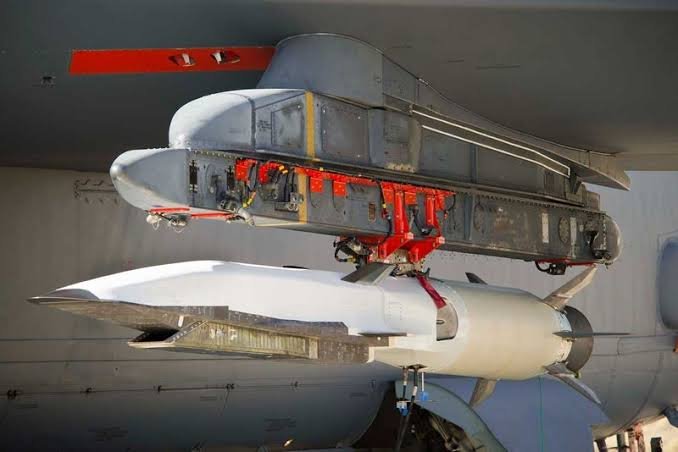
mokahete
ACCESS: Restricted
- Joined
- 18 April 2025
- Messages
- 28
- Reaction score
- 12
Now for hgv claim.How is the US ahead if they are not fielding a scramjet missile into operation yet? I am really curious if you even have an explanation for that?
HGVS are by no means similar to scramjets since scramjets fly at lower altitudes and can maintain propulsion alot better than solid or liquid fuel rockets by using the advantage of air velocity mixing fuel and combustion for better efficiency of maintaining high speeds at a longer time throughout its flight. Also plasma properties based on velocity and altitude can deal with higher frequencies to effect adversary radar detection and tracking.
1st, it has sustained rocket motor in second stage, mean it has "powered flight".
2nd, even with those large fin, it ain't generating enough lift to be called an "hgv", those fins at most can be of some help in lift but mostly for maneuverability at those speeds, plus it's claimed max range is 1500km while while china claims df17 which is a similar size to this missile has range upto 2500km, and the dfzf HGV is not powered at all, so it must be a very "poor hgv" performance wise that even with powered flight it can't match the range( mainly due to lift generated by HGV's allowing them to glide farther) of unpowered chinese dfzf.
And in both cases the booster of both will only be used to propel both near space, will not directly help in more horizontal range.
So at most a hybrid between HGV and HCM-RS. Sacrificing lift and range for more "controllablity", and relying on powered flight for cruising/flying at higher altitude till it gets closer to target, then diving in terminal.
( My characterisation is based on flight characteristics/profile and aerodynamic behaviour and aspects of the missiles/systems)
In the second graph, "mid course" path of both hgv and hcm is similar with hgv being on somewhat higher altitude, but again hgv's attain that by generating "lift" while This LR-ASHM just doesn't have the shape to generate enough lift to be called a hgv( this missile looks more like a gaint SM-6 than an hgv) it will mostly rely on its powered thrust to maintain the flight path( like an hcm), that's why we can't call the midcourse as "glide", it's not gliding in its midcourse.
Attachments
Last edited:
Null
ACCESS: Confidential
- Joined
- 16 December 2024
- Messages
- 75
- Reaction score
- 106
There was a thing called the kholod project which to summarize was the 1st successful scramjet project which was flown in Russia which the US and France were able to get valuable data from. Since than the US and Russia had multiple scramjet projects. Russia claims the Zircon is mach 8-10 1000kms, probably tested in Ukraine.If zircon did turned out to be "scramjet" then I would be wrong.
But lets remove russia from the equation,as it's unclear for now.
Now look at other countries.
Which countries except US had fielded full on prototypes for scramjet hcm?
Other have so far only flown "tech demonstrator" at most.
This video shows changes that allow the Zircon to be used on the Perm submarine, talks about tubes being used in subs and ship for launchers and other Yasen class submarines which also can be used to launch these missiles.

Испытательные пуски ракет "Циркон" с подлодок завершены
Пуски гиперзвуковых крылатых ракет "Циркон" в рамках испытаний с подводных лодок завершены, идёт процесс принятия ракет на вооружение, сообщил журналистам... РИА Новости, 31.01.2025
The difference right now is Russia is trying to make this missile, "operational" how close is the US in putting a scramjet missile into an operational status for military use? I don't doubt the US but the issue is I don't see any news publicly made from the US that they are close yet in putting a scramjet missile to military use against targets into operation.REUTOV (Moscow region), 31 Jan - RIA Novosti. Launches of hypersonic cruise missiles "Zircon" as part of tests from submarines have been completed, the process of accepting the missiles into service is underway, the general director and general designer of NPO Mashinostroyeniya Alexander Leonov told journalists.
«
"We have conducted tests. There is a whole program for its adoption into service, but it is absolutely not connected with the Zircon itself. We do not need to conduct any tests for this. The ships are equipped in the order established by the Ministry of Defense," Leonov said on the sidelines of the Academic Readings on Cosmonautics.
This is how he answered the question of when flight tests of the Zircon cruise missiles from an underwater carrier will resume
mokahete
ACCESS: Restricted
- Joined
- 18 April 2025
- Messages
- 28
- Reaction score
- 12
Your assuming zircon to be a guaranteed "scramjet".There was a thing called the kholod project which to summarize was the 1st successful scramjet project which was flown in Russia which the US and France were able to get valuable data from. Since than the US and Russia had multiple scramjet projects. Russia claims the Zircon is mach 8-10 1000kms, probably tested in Ukraine.
This video shows changes that allow the Zircon to be used on the Perm submarine, talks about tubes being used in subs and ship for launchers and other Yasen class submarines which also can be used to launch these missiles.

Испытательные пуски ракет "Циркон" с подлодок завершены
Пуски гиперзвуковых крылатых ракет "Циркон" в рамках испытаний с подводных лодок завершены, идёт процесс принятия ракет на вооружение, сообщил журналистам... РИА Новости, 31.01.2025ria-ru.translate.goog
The difference right now is Russia is trying to make this missile, "operational" how close is the US in putting a scramjet missile into an operational status for military use? I don't doubt the US but the issue is I don't see any news publicly made from the US that they are close yet in putting a scramjet missile to military use against targets into operation.
For me it's status as a "scramjet" powered missile is in question, and I lean more into the camp of it being purely rocket sustained, tho possibility of it being scramjet does exist.
Though I beleive zircon to still be a able to have flight characteristics/profile same as HCM even with rocket motors.
if we look at "modern/latest" scramjets projects.
The "confirmed" country to show the most progress yet is USA.
If zircon did turned out to be scramjet powered( need a clear picture of its nose without the cap for confirmation) I'll gladly take my words back.
Null
ACCESS: Confidential
- Joined
- 16 December 2024
- Messages
- 75
- Reaction score
- 106
every air breathing engine(will always be 2nd stage) requires a 1st stage rather if its a ramjet or a scramjet to reach the right velocity. Zircon requires a 1st stage and if the 2nd stage achieves hypersonic speeds and at low altitudes it's a scramjet. I heard of powered and unpowered HGVs but it wouldn't matter scramjets fly at lower altitudes.Your assuming zircon to be a guaranteed "scramjet".
For me it's status as a "scramjet" powered missile is in question, and I lean more into the camp of it being purely rocket sustained, tho possibility of it being scramjet does exist.
Though I beleive zircon to still be a able to have flight characteristics/profile same as HCM even with rocket motors.
if we look at "modern/latest" scramjets projects.
The "confirmed" country to show the most progress yet is USA.
If zircon did turned out to be scramjet powered( need a clear picture of its nose without the cap for confirmation) I'll gladly take my words back.
mokahete
ACCESS: Restricted
- Joined
- 18 April 2025
- Messages
- 28
- Reaction score
- 12
That's another assumption that only "scramjets can help achieve hypersonic speed at lower Altitude(30-50km) in flat trajectory".every air breathing engine(will always be 2nd stage) requires a 1st stage rather if its a ramjet or a scramjet to reach the right velocity. Zircon requires a 1st stage and if the 2nd stage achieves hypersonic speeds and at low altitudes it's a scramjet. I heard of powered and unpowered HGVs but it wouldn't matter scramjets fly at lower altitudes.
you can achieve same with sustained rocket motors( though with significantly more inefficiency) but more simpler to make.
For achieving similar range as scramjet size of rocket sustained missile doesn't need to increase but weight will increase a lot.
Plus the pics of zircon also incline " more" into it being purely rocket sustained two stage( both stages being rocket powered, though second stage being more energy dense and able to maintain sustained thrust) HCM.
But I will still be open to a small possibility that it can be a scramjet if intakes are present at the hidden nose.
Scott Kenny
ACCESS: USAP
- Joined
- 15 May 2023
- Messages
- 11,531
- Reaction score
- 14,132
Packaging. A ramjet or scramjet needs a large nozzle. That's empty volume, but it's designed to hold pressure so it's strong and heavy. Cast your solid rocket motor inside it with a ceramic nozzle that will blow out the back when the (sc)ramjet starts (maybe with a little explosive assistance).Why would a scramjet HCM have an integral booster just because soviets used integral booster in sa6 along with ramjet during cold war?
What benifit or ease of construction will it have over an booster that can be detached once scramjet starts?
Why benifit would integral booster have that the scramjet hcm will still that dead weight?
The US tested a ramjet-powered missile with that design in the 1970s or 80s called ASALM.

ASALM - Wikipedia
I still doubt zircon is purely rocket powered. Even assuming liquid fuel, look at size and weight of air launched missiles like KH-22. Now imagine how much the first stage external booster would have to struggle with load. An air breathing engine is always going to be more mass efficient and every Soviet/Russian surface launched supersonic missile I can think of was an air breather. It would be quite surprising if Zircon was a purely rocket driven missile. Additionally , liquid fuel would raise a lot of safety issues for ship/sub use. The Russians have used liquid fueled SLBMs in the past but I do not believe for some decades as the USSR; the USN never accepted the practice with early exception of Regulus.
ETA: correction: Regulus was jet powered not liquid. So while the USN has had JP on its ships and boats, it has never stored liquid rockets.
ETA: correction: Regulus was jet powered not liquid. So while the USN has had JP on its ships and boats, it has never stored liquid rockets.
Last edited:




